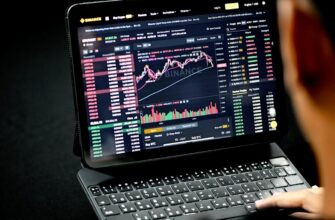- Why Trade Ethereum Futures on Bybit with a 15-Minute Timeframe?
- Essential Indicators for 15-Minute Ethereum Futures Trading
- Optimal Bybit Settings for 15-Minute ETH/USDT Trading
- Risk Management Strategies for Short-Term Trading
- Step-by-Step Trading Strategy on the 15-Minute Chart
- Frequently Asked Questions (FAQ)
- What leverage is safe for 15-minute ETH futures?
- How many trades should I make daily with this strategy?
- Which time sessions work best for 15-minute ETH trading?
- Do these settings work during Ethereum upgrades or bear markets?
Why Trade Ethereum Futures on Bybit with a 15-Minute Timeframe?
The 15-minute chart strikes a perfect balance for Ethereum futures traders: It filters out market noise while capturing intraday trends. Bybit’s low fees, deep liquidity, and advanced order types make it ideal for executing precise short-term ETH/USDT strategies. This timeframe helps you capitalize on volatility without the stress of scalping, offering 4-8 high-probability setups daily.
Essential Indicators for 15-Minute Ethereum Futures Trading
Combine these tools on your Bybit chart for optimal decision-making:
- Exponential Moving Averages (EMAs): Use 9-EMA (short-term trend) and 20-EMA (dynamic support/resistance). Crossovers signal entry points.
- Relative Strength Index (RSI): Set to 14 periods. Overbought (70+) and oversold (30-) zones help confirm reversals.
- Volume Profile: Identify high-volume nodes where price may stall or reverse.
- Bollinger Bands (20,2): Spot volatility expansions and mean-reversion opportunities near band edges.
Optimal Bybit Settings for 15-Minute ETH/USDT Trading
Configure your platform for efficiency:
- Leverage: Never exceed 10x. ETH’s volatility demands caution.
- Order Types: Always use Stop-Loss (SL) and Take-Profit (TP) orders. Set SL at 1-2% below entry, TP at 2-3% above for 2:1 risk-reward.
- Chart Setup: Enable Heikin-Ashi candles for cleaner trend visualization. Add VWAP for intraday bias confirmation.
- Margin Mode: Choose Cross Margin for flexibility during short-term swings.
Risk Management Strategies for Short-Term Trading
Protect your capital with these rules:
- Risk no more than 1% of your account per trade
- Close positions before major news events (e.g., Fed announcements)
- Reduce position size during low-volume periods (Asian session)
- Use Bybit’s “Reduce-Only” orders to prevent accidental over-leverage
Step-by-Step Trading Strategy on the 15-Minute Chart
- Identify Trend: Price above 20-EMA = bullish bias. Below = bearish.
- Wait for Pullback: In uptrends, buy when RSI dips below 45 and price touches 9-EMA.
- Confirm with Volume: Entry requires above-average green volume candles.
- Set Orders: Place SL below recent swing low, TP at nearest resistance level.
- Exit Early: Close 50% at 1.5% gain, let remainder run until RSI >70 or EMA crossover reverses.
Frequently Asked Questions (FAQ)
What leverage is safe for 15-minute ETH futures?
Stick to 5x-10x maximum. Higher leverage increases liquidation risk during ETH’s frequent 3-5% intraday swings.
How many trades should I make daily with this strategy?
Quality over quantity. Aim for 2-4 high-conviction setups. Overtrading erodes profits through fees and emotional fatigue.
Which time sessions work best for 15-minute ETH trading?
London (7AM-4PM UTC) and New York (1PM-10PM UTC) sessions offer peak volatility. Avoid low-activity Asian sessions unless trading breakouts.
Do these settings work during Ethereum upgrades or bear markets?
Adjust during high-impact events: Widen stop losses, reduce position size by 50%, and wait for confirmed breakouts. In bear trends, flip strategy directions (sell rallies instead of buying dips).








